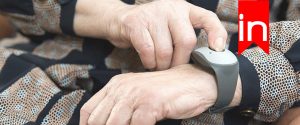Sponge baths, also known as bed baths, are a common practice used to clean the body of seniors who are unable to bathe themselves. This is an essential part of daily care for seniors who are bedridden or have limited mobility. The process involves using a sponge or washcloth, warm water, and soap to clean the body while the individual remains in bed.
Sponge baths are typically given to seniors who are unable to get out of bed due to a medical condition or injury. This can include seniors who have suffered a stroke, have limited mobility due to arthritis, or are recovering from surgery. The process is performed by a caregiver or healthcare professional and is essential for maintaining good hygiene and preventing infections. Sponge baths can also be a comforting and relaxing experience for seniors, as it can help them feel refreshed and clean.
Understanding Sponge Bath
Sponge bath is a type of bathing technique that is commonly used for seniors who are unable to take a regular bath or shower. It involves using a sponge or washcloth, warm water, and soap to clean the body while the person is lying in bed.
The sponge bath is a gentle and effective way to maintain personal hygiene for seniors who have limited mobility. It is also a good option for those who have sensitive skin or are recovering from surgery or illness.
To perform a sponge bath, a caregiver or family member will need a few basic supplies, including a basin or tub, warm water, soap, a washcloth, and a towel. The person receiving the sponge bath will need to be positioned comfortably in bed, with a towel or waterproof pad underneath them to protect the bedding.
The caregiver will then wet the washcloth or sponge in warm water and add soap as needed. They will then gently wash the person’s face, neck, arms, chest, stomach, legs, and feet. Care should be taken to avoid getting water in the person’s eyes, ears, or mouth.
After the sponge bath is complete, the caregiver will dry the person’s skin with a clean towel and apply lotion if desired. The basin or tub should be emptied and cleaned thoroughly after use.
Overall, sponge bath is a simple and effective way to maintain personal hygiene for seniors who are unable to take a regular bath or shower. It is a gentle and comfortable method that can help seniors feel clean and refreshed.
Benefits of Sponge Bath for Seniors
Sponge bath is a gentle and effective way to keep seniors clean and comfortable. Here are some of the benefits of sponge bath for seniors:
Hygiene
Sponge bath is an excellent way to maintain good hygiene for seniors who are bedridden or have limited mobility. It helps to remove dirt, sweat, and bacteria from the skin, reducing the risk of infections and other health problems.
Comfort
Sponge bath can help to improve the comfort of seniors by reducing body odor, itching, and other discomforts associated with poor hygiene. It can also help to promote relaxation and improve sleep quality.
Control
Sponge bath gives seniors more control over their hygiene routine and allows them to maintain their dignity and independence. It can also help to reduce embarrassment and anxiety associated with being dependent on others for personal care.
Skin
Sponge bath is gentle on the skin and can help to prevent skin irritation and other skin problems. It can also help to improve skin hydration and reduce dryness, which is common among seniors.
Gentle
Sponge bath is a gentle way to clean the body, especially for seniors with delicate skin. It can help to prevent skin tears, bruises, and other injuries that can occur with rough handling.
Stress
Sponge bath can help to reduce stress and anxiety for seniors by providing a calming and soothing experience. It can also help to improve their mood and overall well-being.
Body Lotion
Sponge bath can be combined with body lotion to provide additional benefits for seniors with dry or sensitive skin. The lotion can help to moisturize and soothe the skin, reducing dryness and irritation.
Cleaning up
Sponge bath can help to keep the bed and surrounding area clean and hygienic. It can also help to reduce the workload of caregivers and improve the overall quality of care for seniors.
In summary, sponge bath is a simple and effective way to maintain good hygiene, improve comfort, and promote independence for seniors. It is gentle, soothing, and can be customized to meet the unique needs of each individual.
Preparing for the Sponge Bath
Preparing for a sponge bath is essential to ensure that the senior receives a comfortable and safe experience. The following are some things to consider before starting the sponge bath:
Supplies and Equipment
Before starting the sponge bath, make sure that all the necessary supplies and equipment are available. This includes towels, soap, shampoo, body wash, disposable gloves, and vinyl gloves. It is also essential to have a waterproof mat to protect the bed or any other surface.
Temperature
The room temperature should be warm enough to prevent the senior from feeling cold during the sponge bath. The water temperature should also be comfortable, neither too hot nor too cold. It is recommended to test the water temperature before starting the sponge bath to avoid any discomfort.
Privacy
Maintaining privacy during the sponge bath is crucial. The caregiver should ensure that the senior is covered with a towel or blanket while washing each body part. The caregiver should also close the door and draw the curtains to ensure privacy.
Gloves
Wearing gloves during the sponge bath is essential to prevent the spread of germs and infections. Disposable gloves or vinyl gloves can be used, depending on the preference of the caregiver.
Sponge Baths vs. Bed Baths
Sponge baths and bed baths are different. Sponge baths are done while the senior is sitting in a chair or on the edge of the bed, while bed baths are done while the senior is lying in bed. It is essential to know which type of bath is required before starting the process.
In conclusion, preparing for a sponge bath requires attention to detail, and it is essential to ensure that all necessary supplies and equipment are available. Maintaining privacy and using gloves to prevent the spread of germs are also crucial.
Step-By-Step Guide to Sponge Bath
When it comes to giving a sponge bath to a senior, it’s important to follow a step-by-step guide to ensure their comfort and safety. Here’s a simple guide to help you through the process:
- Undress the senior: Begin by helping the senior undress, leaving their underwear on if they prefer. Make sure to keep them covered with a towel or sheet to maintain their privacy and warmth.
- Prepare the washcloth: Wet a washcloth with warm water and wring it out. You can use a mild soap if necessary, but be sure to avoid getting soap in their eyes.
- Start with the face: Begin washing the senior’s face, starting at the forehead and working your way down to the chin. Be gentle around the eyes and eyelids, using a separate corner of the washcloth for each eye.
- Move to the neck, arms, and chest: Continue washing the neck, arms, and chest, making sure to clean under the arms and between the fingers. Use a separate washcloth for each area.
- Wash the back and belly: Help the senior turn onto their side and wash their back, then turn them onto their back to wash their belly. Be gentle around any sensitive areas.
- Clean the legs and feet: Move on to washing the legs and feet, making sure to clean between the toes. Use a separate washcloth for each foot.
- Address the genital and perineal areas: If the senior is comfortable, wash the genital and perineal areas last. Use a separate washcloth for each area, and be sure to clean gently and thoroughly.
- Dry and dress: Once the sponge bath is complete, dry the senior off with a towel and help them get dressed. If they need help with their hair, you can wash and dry it during the bath.
Remember to be gentle and respectful throughout the entire process, and always prioritize the senior’s comfort and safety.
Special Considerations for Bedridden Seniors
For older adults who are bedridden or have a long-term inability to move, sponge baths can be an effective way to maintain cleanliness and prevent infections. However, there are some special considerations that caregivers should keep in mind when giving bed baths to seniors.
One of the most important considerations is the comfort of the elderly person. Caregivers should ensure that the room is warm and that the bed is positioned at a comfortable height. They should also use gentle, soothing strokes when washing the senior to avoid causing any discomfort or pain.
Another consideration is the control of the senior’s movements. If the elderly person is paralyzed or has limited mobility, the caregiver should take extra care when transferring them to the hospital bed or changing their position during the sponge bath. This can help prevent injuries or accidents.
Caregivers should also pay attention to the hygiene of the hospital bed and the surrounding area. They should use clean water and soap to wash the senior’s body, and ensure that the bed linens are changed regularly to prevent the spread of infections.
In addition, it is important to communicate with the senior throughout the bed bath. Caregivers should explain each step of the process and ask for their consent before beginning. They should also be sensitive to the senior’s privacy and dignity, and use towels or blankets to cover any areas that the senior may feel uncomfortable exposing.
Overall, sponge baths can be an effective way to maintain hygiene for bedridden seniors. By taking these special considerations into account, caregivers can ensure that the process is comfortable, safe, and respectful for the elderly person.
Preventing and Treating Skin Conditions
As seniors age, their skin becomes more fragile and prone to skin conditions. It is important to prevent and treat these conditions to maintain healthy skin. Some common skin conditions that seniors may experience include infections, sores, rashes, eczema, psoriasis, fungal growth, parasites, sepsis, abscesses, skin tears, and redness.
Preventing skin conditions is key to maintaining healthy skin. One way to prevent skin conditions is by practicing good hygiene, such as taking regular sponge baths. Gentle cleansing can help remove dirt and bacteria from the skin, reducing the risk of infections and other skin conditions.
Another way to prevent skin conditions is by keeping the skin moisturized. Dry skin can lead to cracking and skin tears, which can increase the risk of infections. Seniors should use a gentle moisturizer to keep their skin hydrated.
Treating skin conditions promptly can also help prevent them from getting worse. For example, if a senior develops a rash, they should avoid scratching it to prevent further irritation. Over-the-counter creams and ointments can help soothe the skin and reduce inflammation.
In some cases, seniors may need medical treatment for skin conditions. For example, if a senior develops a severe infection or abscess, they may need antibiotics or other medications to treat the condition. It is important to seek medical attention promptly if a skin condition does not improve or worsens.
In conclusion, preventing and treating skin conditions is important for seniors to maintain healthy skin. Practicing good hygiene and keeping the skin moisturized can help prevent skin conditions, while prompt treatment can help prevent them from getting worse.
Safety Measures and Precautions
When it comes to giving a sponge bath to seniors, safety should always be a top priority. Here are some measures and precautions that should be taken to ensure the safety of both the caregiver and the senior:
- Falls: Seniors are more prone to falls due to mobility issues, so it’s important to make sure the bathroom and surrounding area are free of any tripping hazards. Use non-slip mats in the shower and on the floor, and install grab bars to provide extra support.
- Stress: Some seniors may feel anxious or stressed during a sponge bath. To help alleviate these feelings, the caregiver should explain the process beforehand and take their time to ensure the senior feels comfortable and at ease.
- Dam: Make sure the water temperature is comfortable and not too hot, as this can cause burns or skin damage. Use a thermometer to check the water temperature before starting the sponge bath.
- Immune system: Seniors have weaker immune systems, so it’s important to use clean towels and washcloths to prevent the spread of germs. Gloves should also be worn to prevent the spread of infection.
- Illness: If the senior is ill or has undergone surgery, extra precautions should be taken to prevent infection. The caregiver should wear a mask and gloves, and dispose of any used towels or washcloths immediately.
By following these safety measures and precautions, caregivers can help ensure a safe and comfortable sponge bath experience for seniors.
Sponge Baths For Seniors
Sponge baths can be an effective and safe way to maintain hygiene for seniors who are unable to take a traditional bath or shower. While sponge baths may not provide the same level of cleanliness as a full bath, they can still help seniors feel refreshed and comfortable.
When giving a senior a sponge bath, it is important to follow proper techniques to prevent the spread of infection and ensure their safety. This includes using warm water, gentle soap, and avoiding areas with medical devices or wounds. Caregivers should also be mindful of the senior’s comfort and privacy during the process.
Seniors who are bedridden or have limited mobility may benefit from regular sponge baths to prevent skin breakdown and infections. It is important to consult with a healthcare professional to determine the appropriate frequency and method of sponge bathing for each individual.
Overall, sponge baths can be a valuable tool in maintaining hygiene and comfort for seniors. With proper techniques and care, they can be a safe and effective alternative to traditional bathing methods.
Related Posts

Medical Alert Bracelet For Breast Cancer Patients: Essential Information for Emergencies

Medical Alert Watch With No Monthly Fee

Why Seniors Living At Home Need a Medical Alert System

Activities of Daily Living: A Comprehensive Guide to Maintaining Independence
Sponge Bath: Bed Bathing Seniors


LifeCall is an American company with a long history of providing excellent monitoring services and efficient emergency alert systems to health care facilities catering to the elderly and individuals for use both indoors and on the go all over the United States.
Call Now
1 (866) 225-1295
Read The Review

